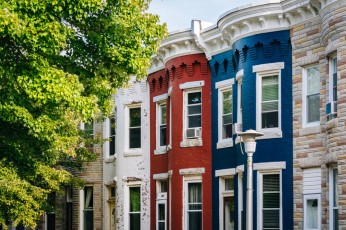



From 2007 to 2017, a troubling trend emerged: the homeownership rate in Baltimore City fell from 51% to 47%, and the Black homeownership rate sank to 42%. This trend is part of a national crisis – even as other racial groups across the country have largely recovered from the wave of foreclosures during the Great Recession, Black homeownership continues to decline. The question now is whether more extensive first-time homebuyer incentives, and more flexibly underwritten home loans, could reverse declining rates of homeownership.
In this report, “Overcoming Barriers to Homeownership in Baltimore City,” authors Sally Scott of the University of Maryland Baltimore County and Seema Iyer of the Jacob France Institute at the University of Baltimore analyze recent homeownership trends in Baltimore by neighborhood and race, review the current system for promoting homeownership, and identify significant barriers to homeownership. The report finds that new incentives and more flexible loans alone would have an insufficient impact on homeownership rates in Baltimore, because they do not address the systemic racism and inequities that disadvantage Black households.
Another complicating factor is the COVID-19 pandemic, which has caused unprecedented spikes in death, illness, business shutdowns, and unemployment, and has hit Black households and communities particularly hard. The COVID-19 crisis adds great urgency to the racial income, wealth, and homeownership gaps discussed in this report. While not addressed in this report, the authors acknowledge that emergency measures are essential to addressing a potential wave of pandemic-caused evictions, as well as tax sale and mortgage foreclosures.
In Baltimore and across America, to address falling homeownership rates, we have to recognize and reverse underlying racial inequities. The report outlines needed systemic solutions: